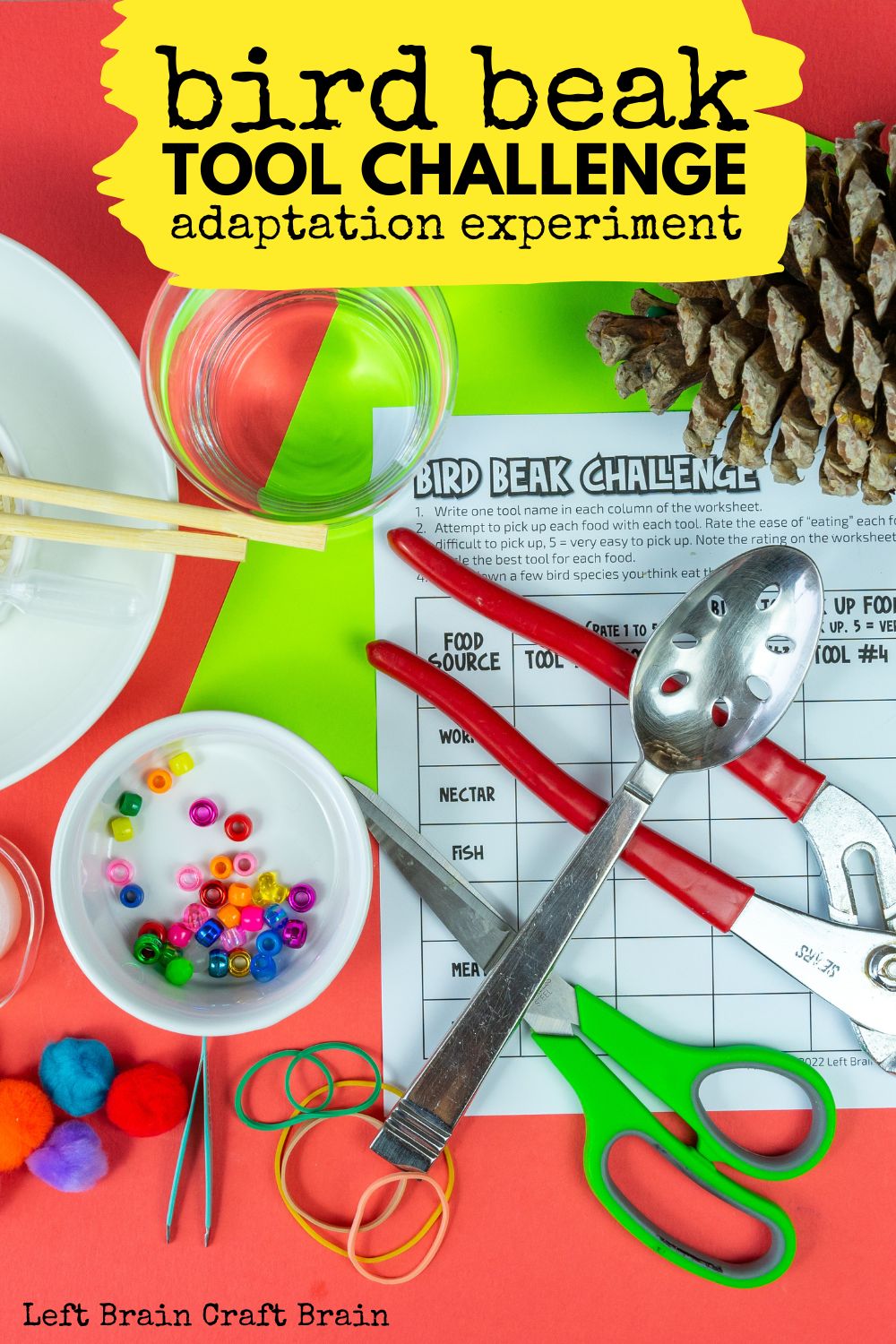Learn how animals adapt to their environment with this hands-on Bird Beak Tool Challenge adaptation experiment. The kids will explore how different birds use their different beaks to eat different food like fish, grubs, and more. They’ll have fun learning about nature by mimicking how birds eat with tools like chopsticks, spoons, and more.
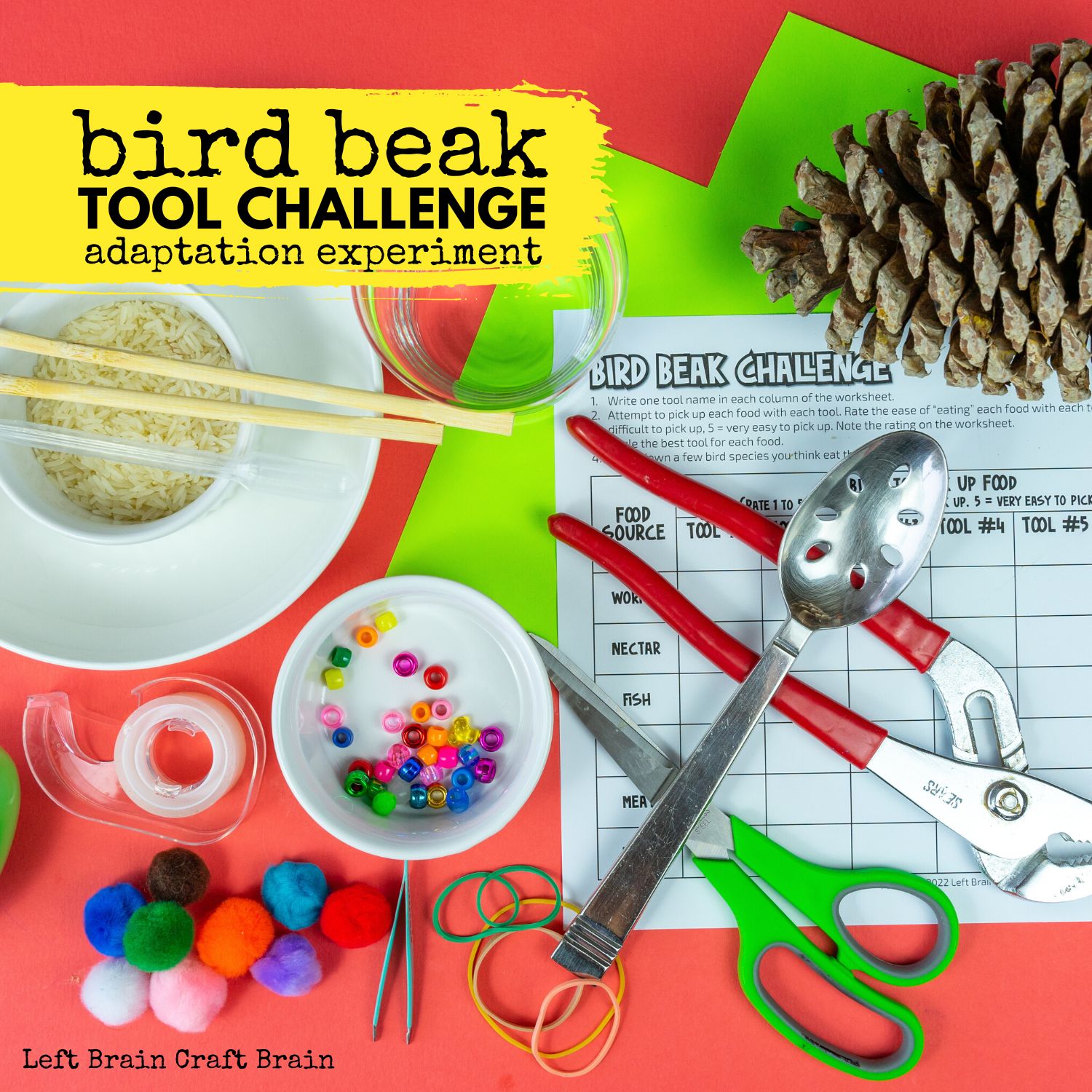
What is Adaptation?
Animals need food, shelter, and water to survive. Luckily, animals have the ability to adapt to their environment to help them improve their chances of survival. Adaptations are characteristics that help them thrive in their environment. Examples of adaptations include:
- A polar bear’s thick fur and layer of fatty insulation keep them warm in their cold environment.
- Pufferfish quickly expand in size by ingesting water to make themselves look larger and more intimidating to predators.
- Tiger stripes help the giant cats avoid predators by disappearing in the shadows cast by tall trees.
- Camel’s long eyelashes help protect their eyes from blowing desert sand.
And of course, birds have adapted too!!
Types of Bird Beaks
Birds have specially adapted beaks that help them catch and eat their prey or forage for berries. Some birds have hybrid beaks that help them eat multiple food sources, too. Below are some examples of bird beaks and how they’re used.
Worm & Mealworm Eaters (blackbirds, mockingbirds): Worm-eating birds need thin, pointed beaks that can securely grab the worms and beetle larvae called mealworms.
Nut Eaters (blue jays, robins, wild turkeys): Nut-eating birds have strong beaks that can crush shells to get to the nutritious nuts inside.
Nectar Eaters (hummingbirds, chickadees, finches): Nectar-eating birds have long, thin beaks and tongues specially formed to gather the liquid using capillary action.
Fish Eaters (pelicans, sea gulls, herons): Fish-eating birds use their beaks to scoop up fish and then filter out the water before eating their prey.
Meat Eaters (eagles, hawks, crows, chickens): Meat-eating birds have heavy, strong beaks that are able to rip the flesh from their prey.
Tree Grub Eaters (woodpeckers, sapsuckers): Grub eaters have drilling, probing beaks that can reach the insects where they are burrowing.

Bird Beak Adaptation Experiment Supplies Needed
This fun experiment uses supplies you probably have kicking around the house or classroom. Don’t have the exact list? You can swap for something similar. We’ve also created a helpful lab experiment worksheet for you. To have it emailed to you, simply fill out the form below.
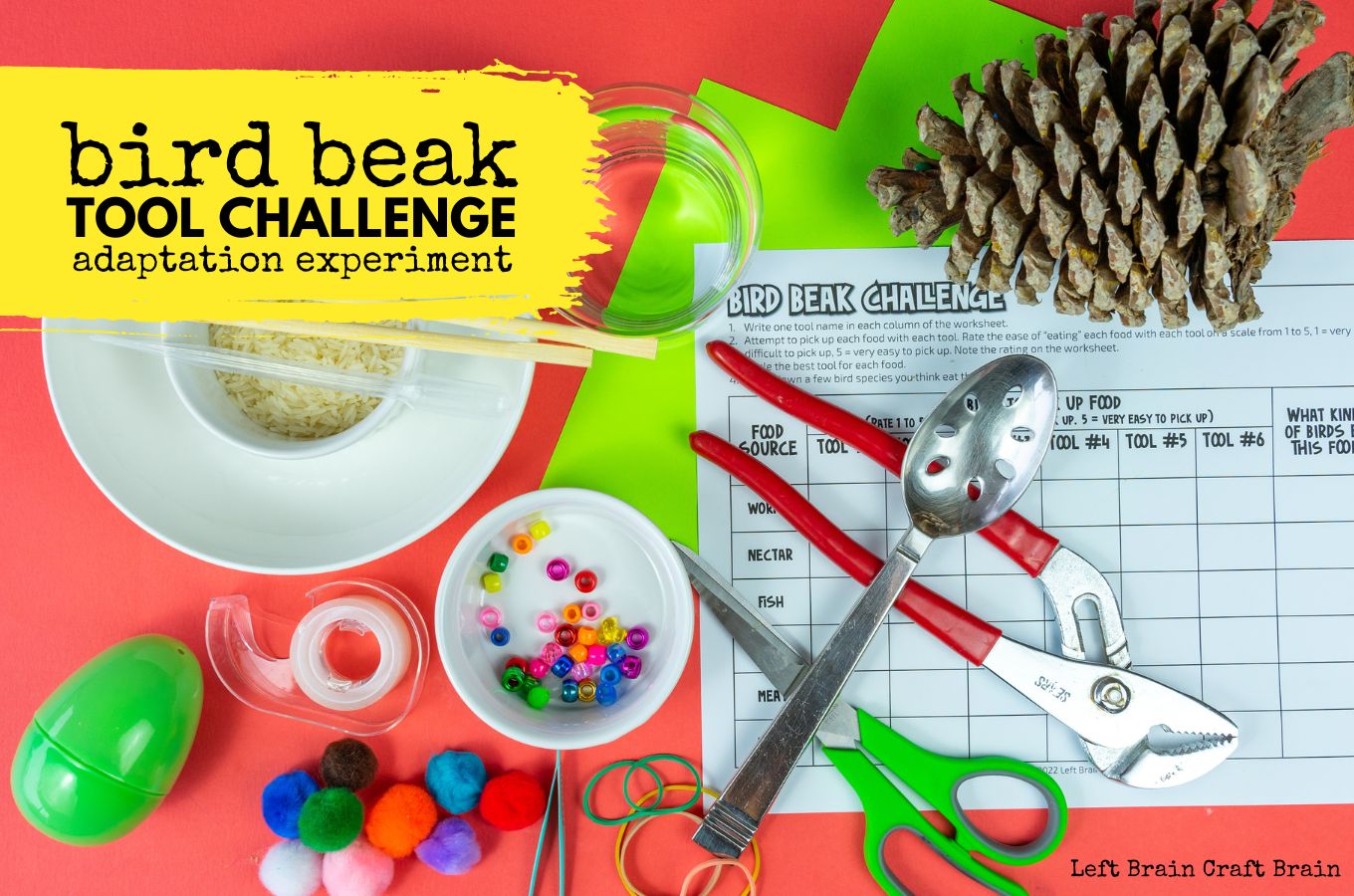
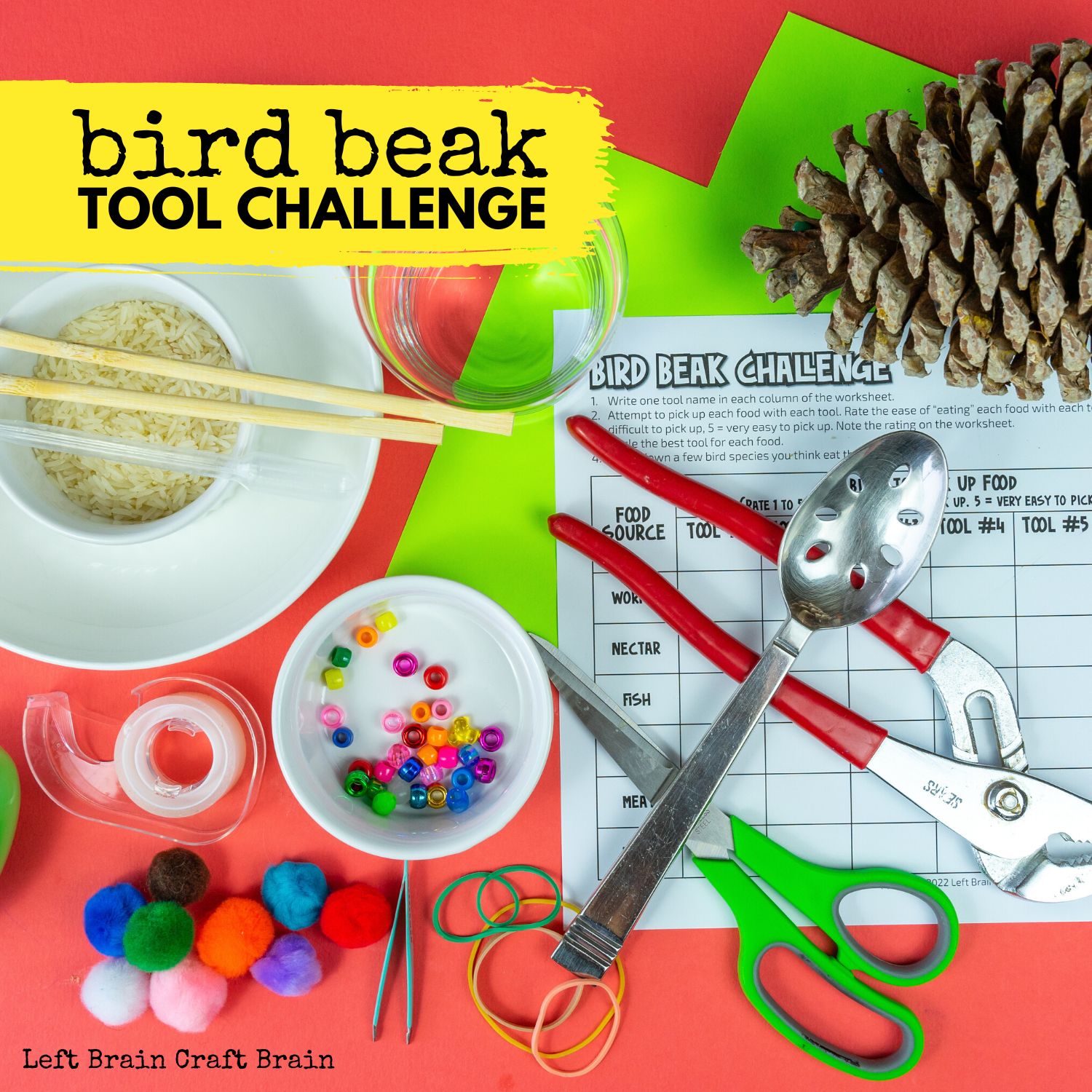
FREE! BIRD BEAK TOOL
CHALLENGE WORKSHEET
AND INSTRUCTIONS
- Small bowl
- 1 cup dirt or uncooked rice
- Rubber bands cut into 1” long pieces
- Cup or glass
- Water
- Large bowl
- Pony beads
- Pine cone
- Paper
- Tape (optional)
- Plastic egg
- Chopsticks
- Pliers
- Scissors
- Slotted spoon or fish tank net
- Pipette
- Tweezers
- Bird Beak Adaptation Experiment worksheet
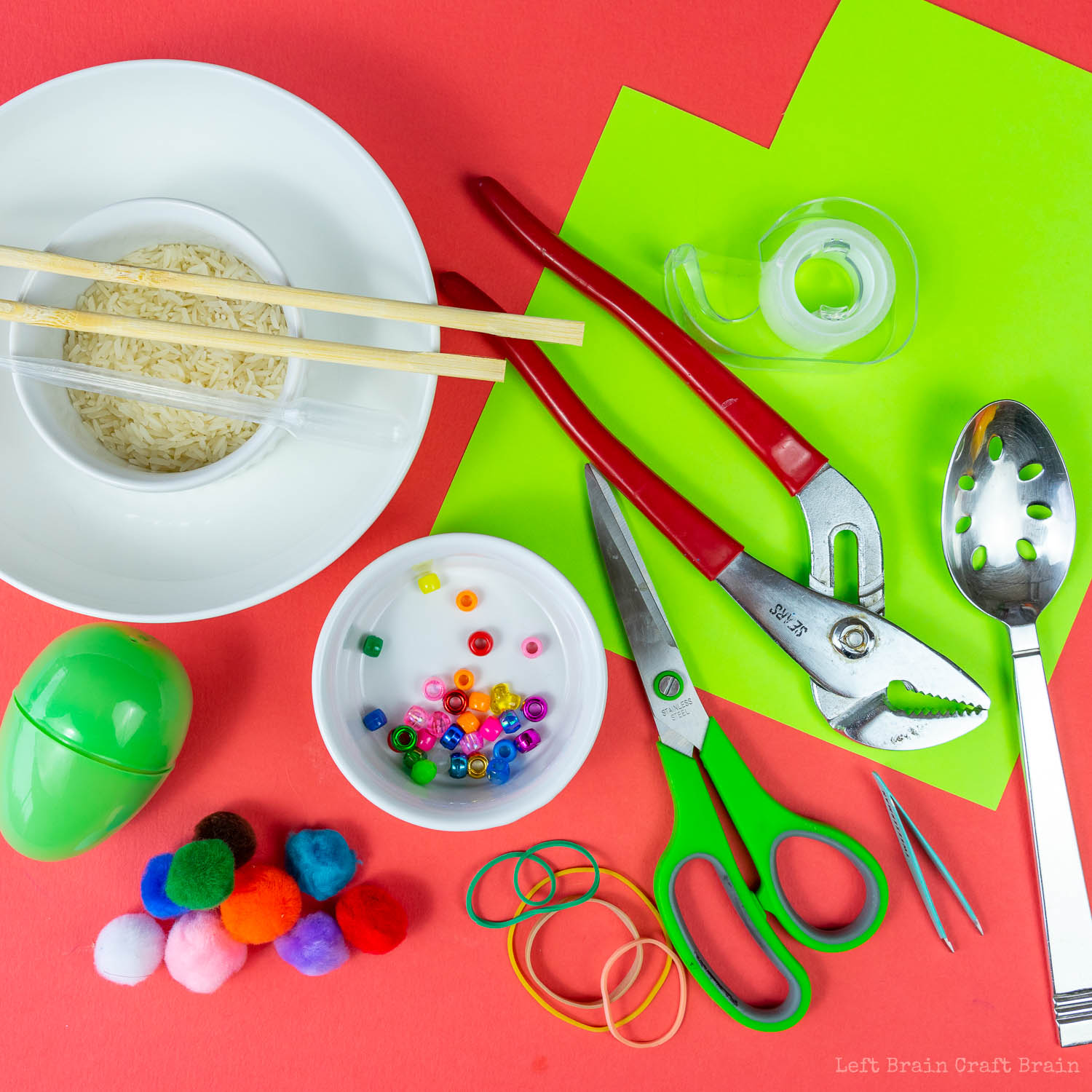
Set Up the Bird Beak Tool Challenge Experiment
To set up the adaptation experiment, first gather the following tools for testing:
- Pliers
- Chopsticks
- Scissors
- Slotted spoon or fish tank net
- Pipette
- Tweezers
Now make 6 feeding stations as follows:
- Worms: Small bowl of dirt or uncooked rice and cut-up rubber bands
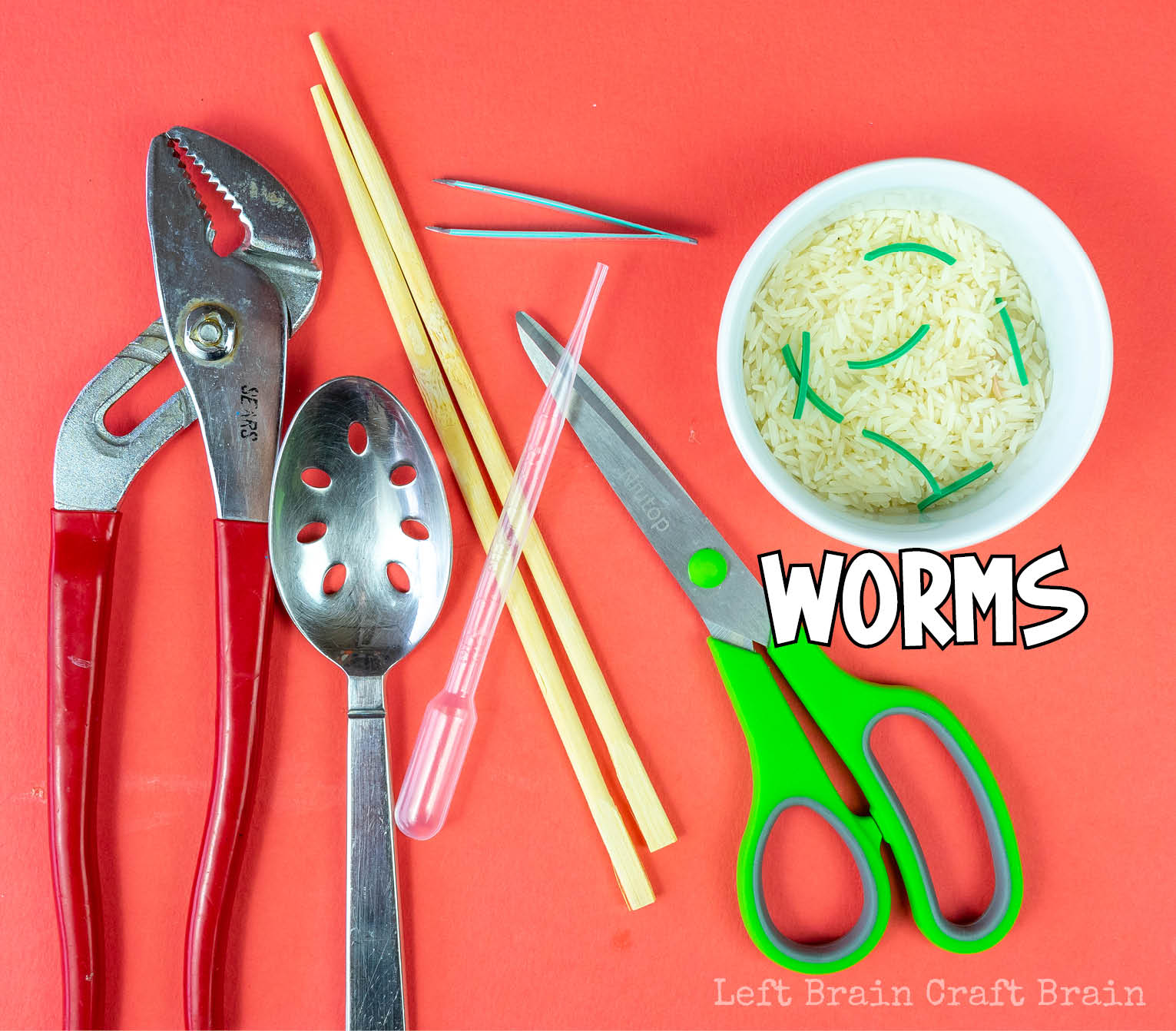
- Nectar: Cup or glass of water
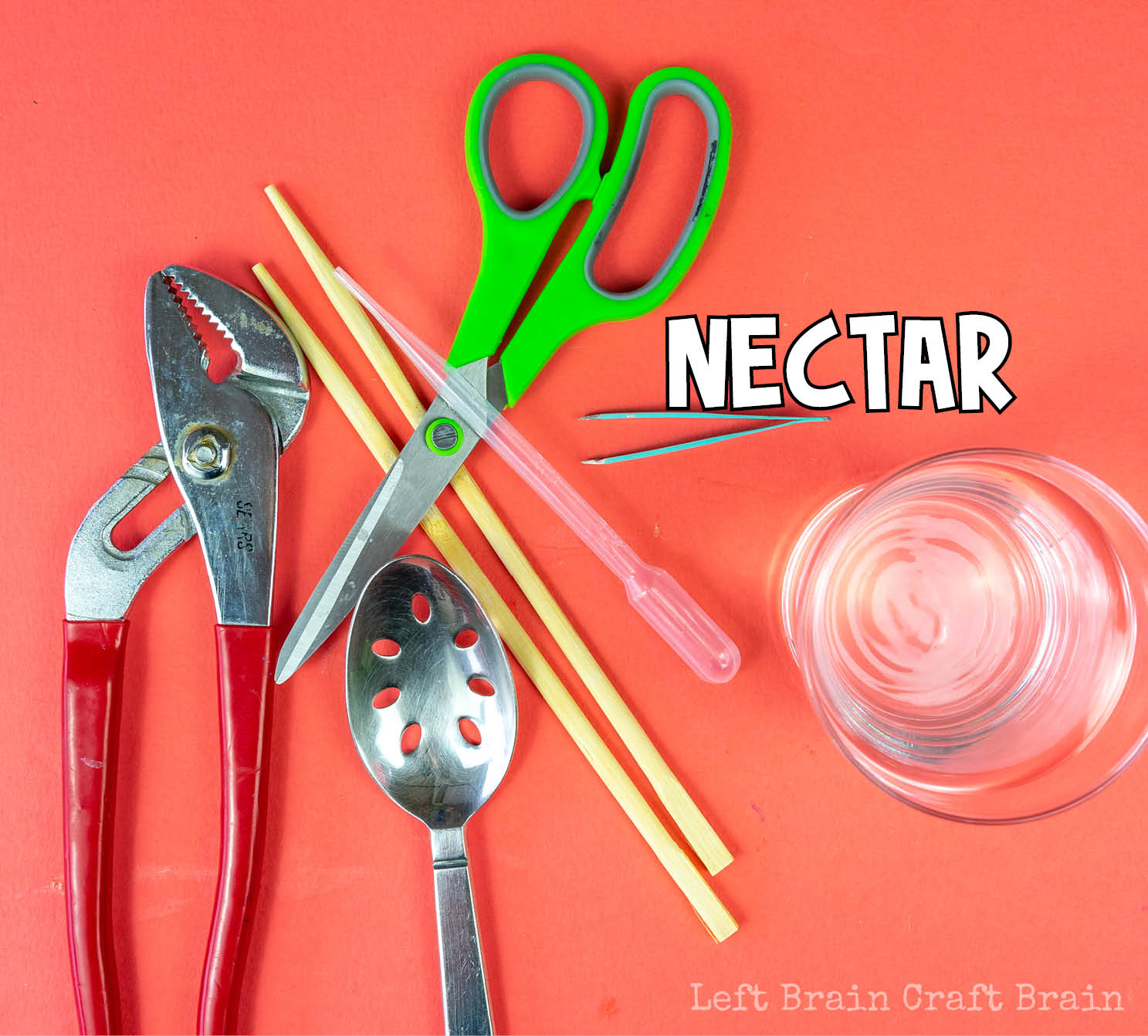
- Fish: Large bowl of water with pony beads dropped in the bottom
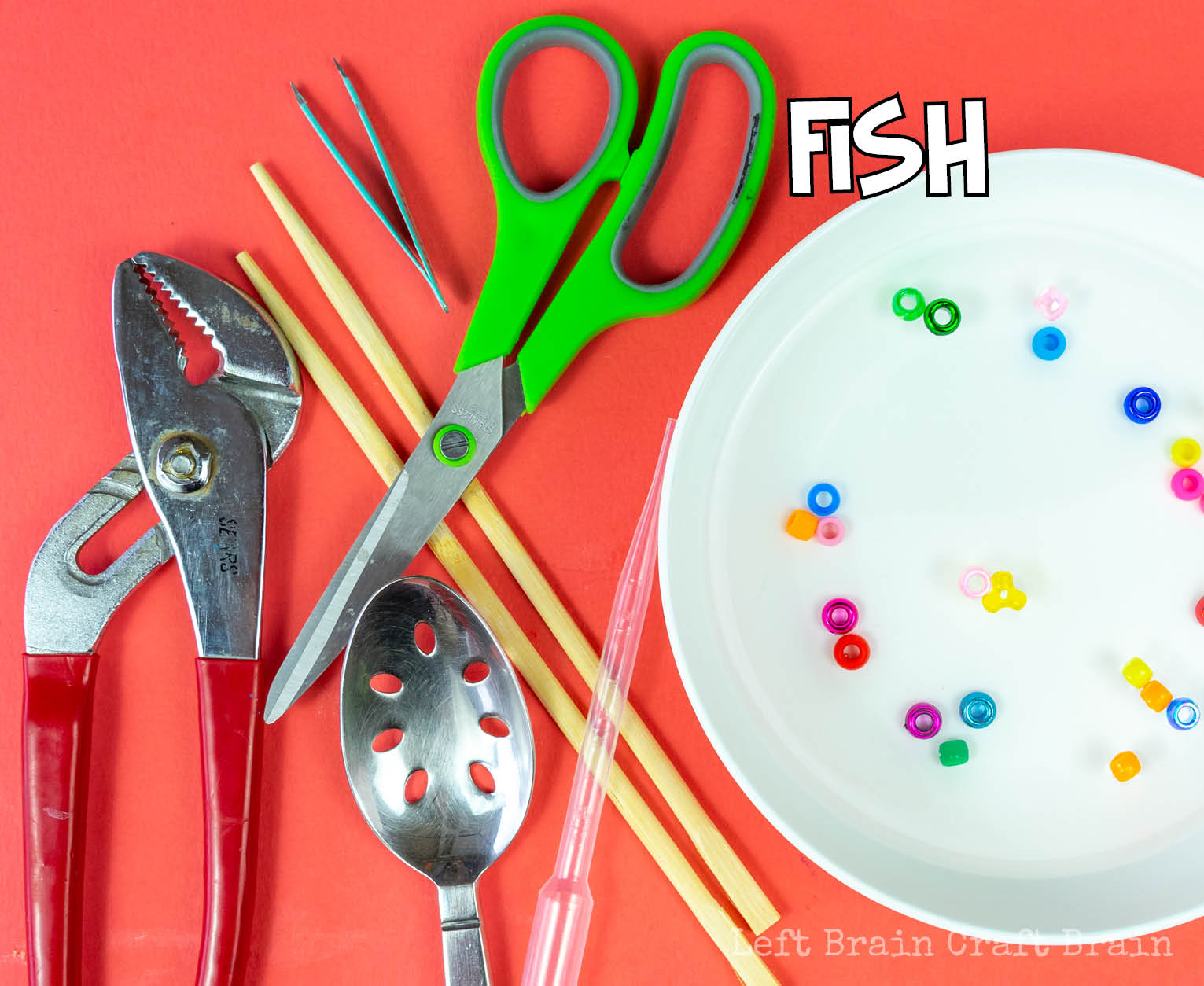
- Tree Grubs: Pine cone with pony beads stuck in between the scales
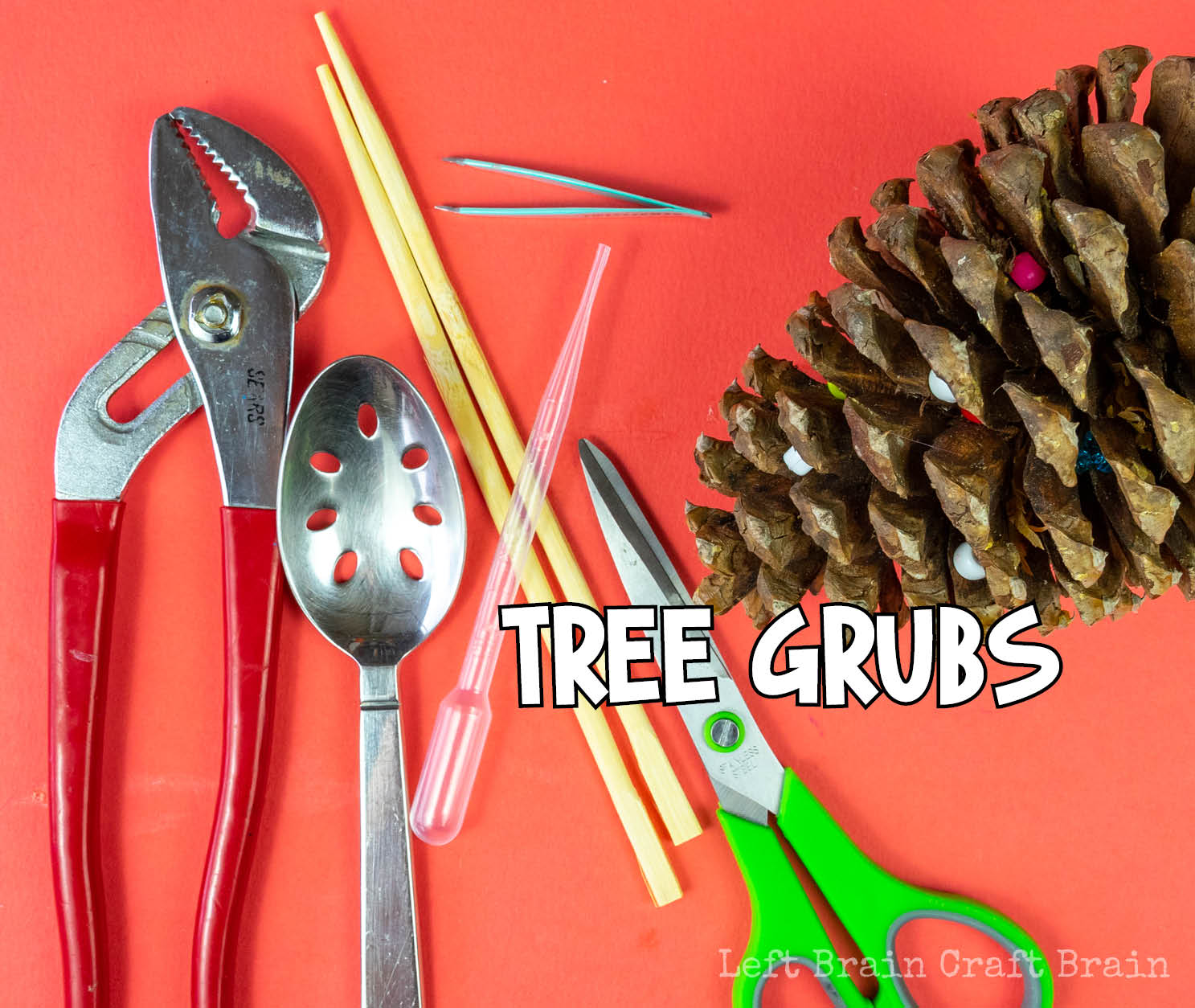
- Meat: Sheet of paper rolled into a cylinder and ends sealed with tape
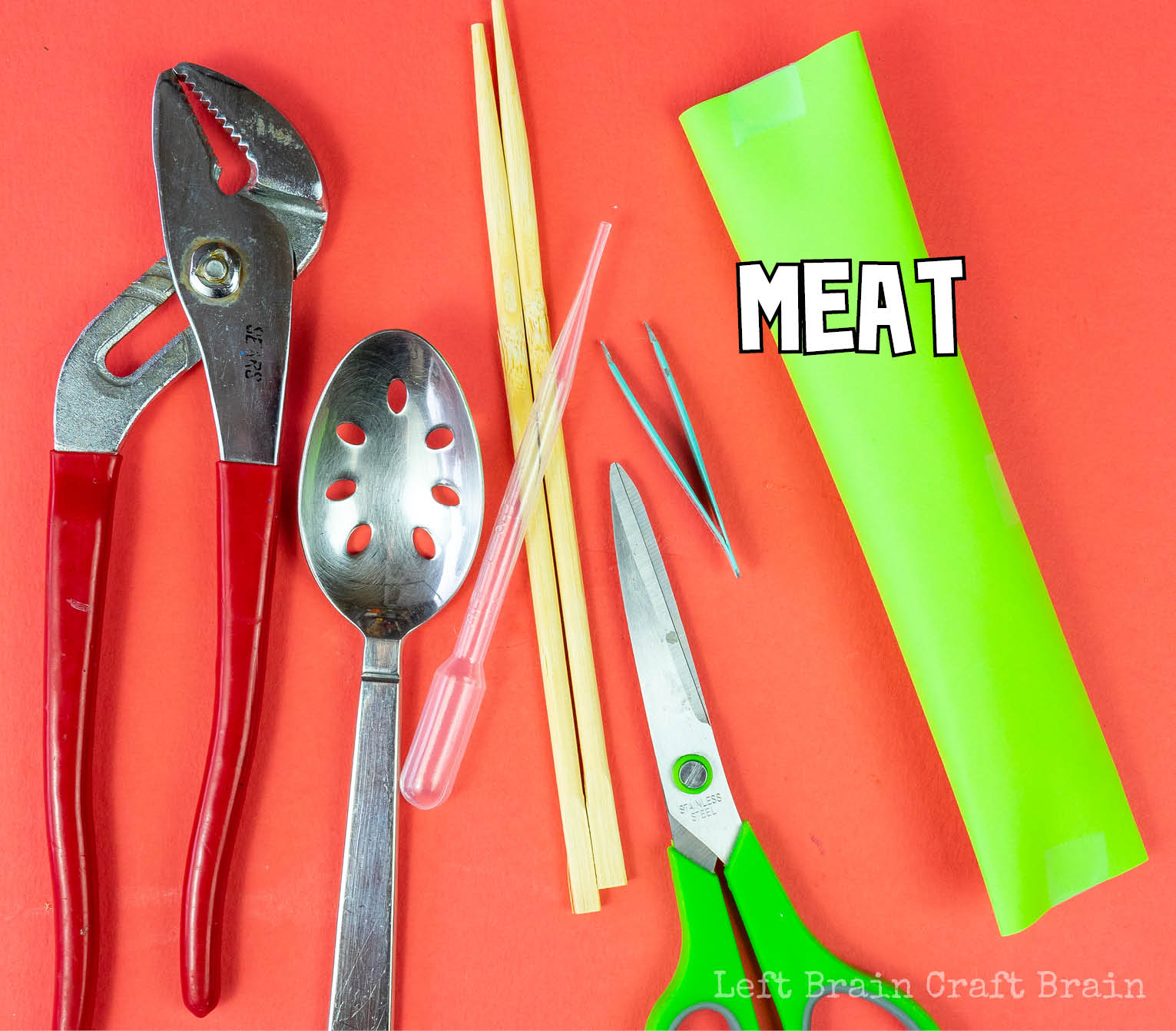
- Nuts: Plastic egg or toy holder with pom poms inside
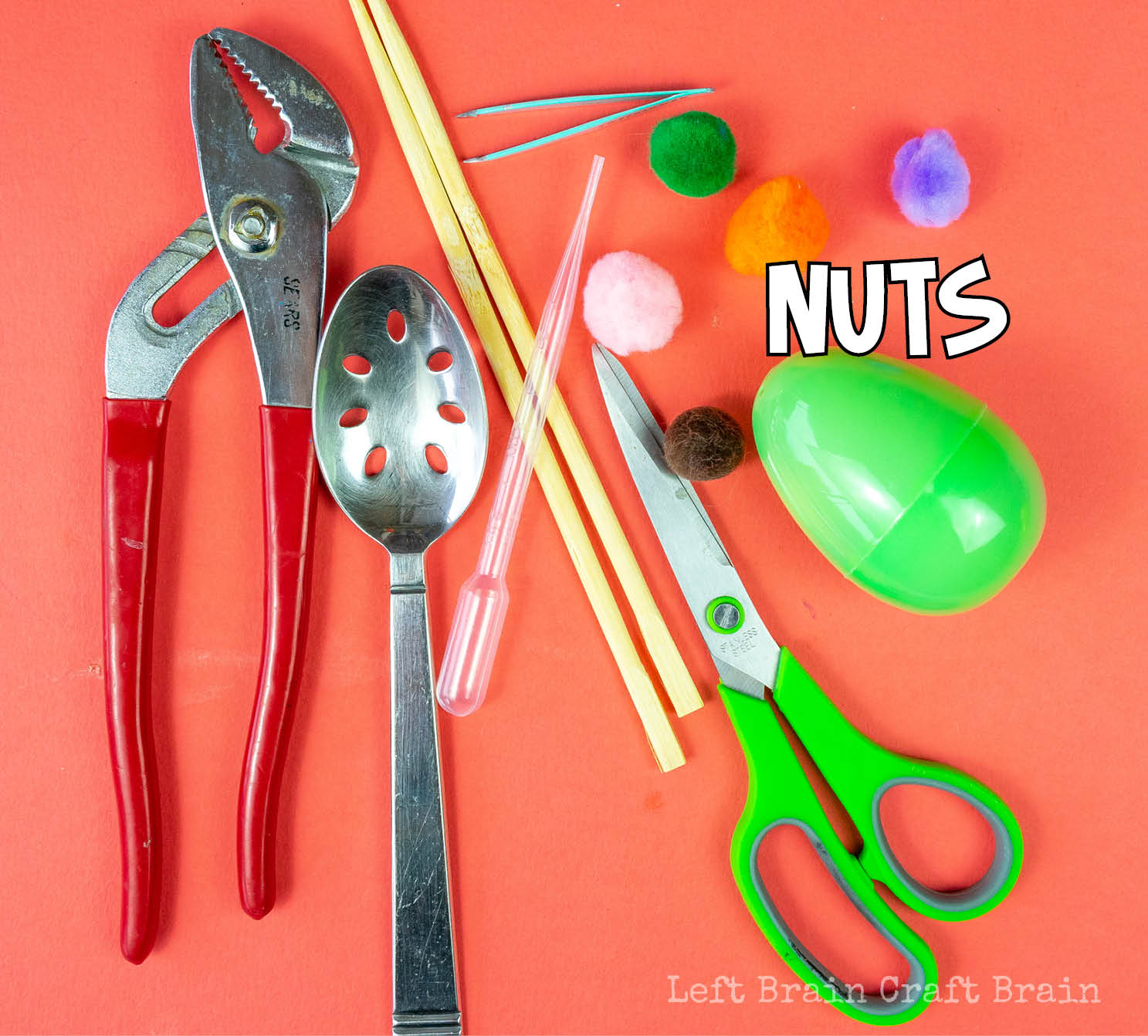
Test the Bird Beaks
Now it’s time to have fun and pretend to be birds!! Try each of the tools with each of the food types using the instructions below.
- Write one tool name in each column of the worksheet.
- Attempt to pick up each food with each tool. Rate the ease of “eating” each food with each tool on a scale from 1 to 5, 1 = very difficult to pick up, 5 = very easy to pick up. Note the rating on the worksheet.
- Circle the best tool for each food.
- Write down a few bird species you think eat these foods.
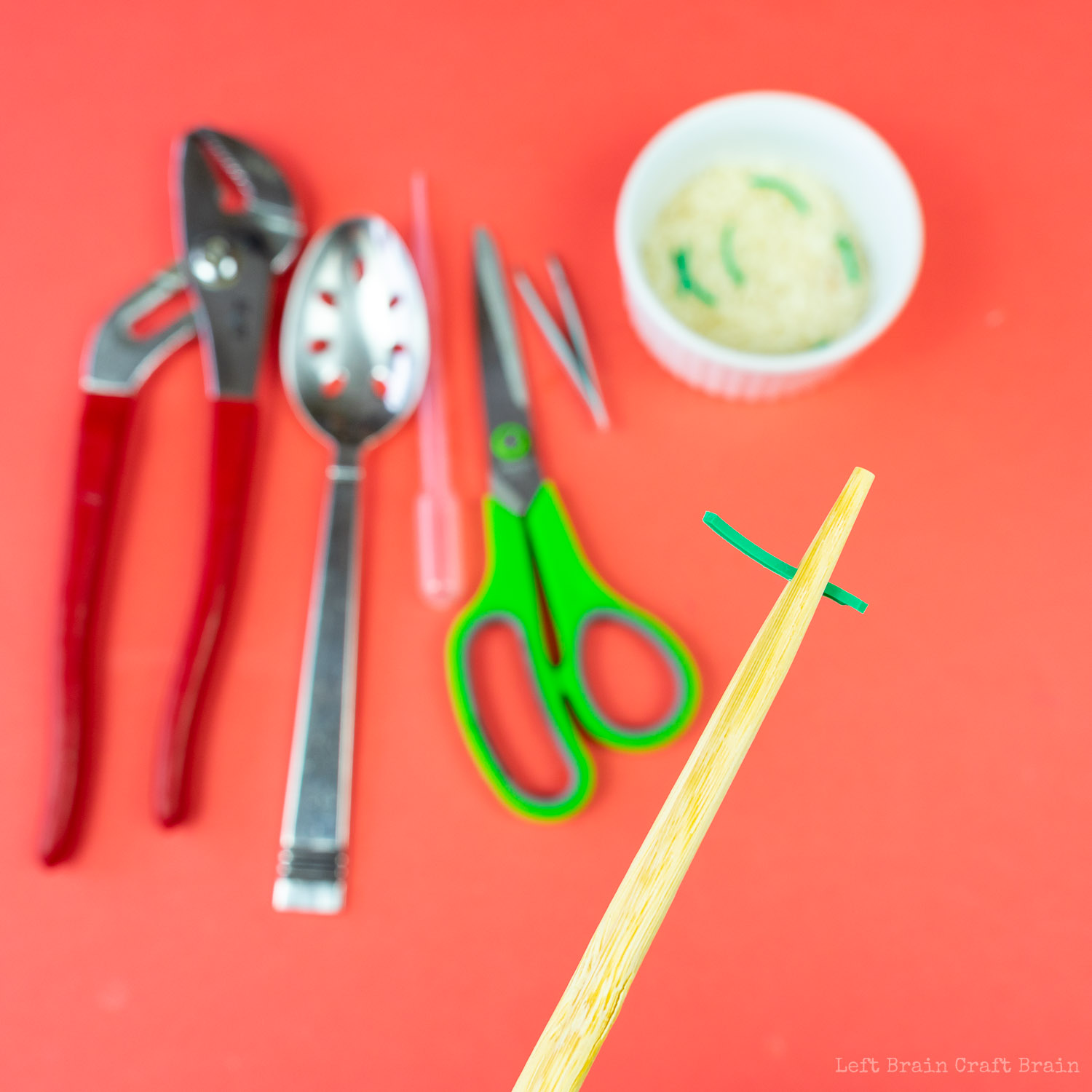
More Nature Learning Fun for Kids
This fun bird beak adaptation experiment is a sneak peek into one of our very favorite resources…
Explore what makes our planet amazing with STEAM Explorers Nature! Inside you’ll find fun, hands-on STEAM learning about plants, animals, fossils, landscapes, and our planet.
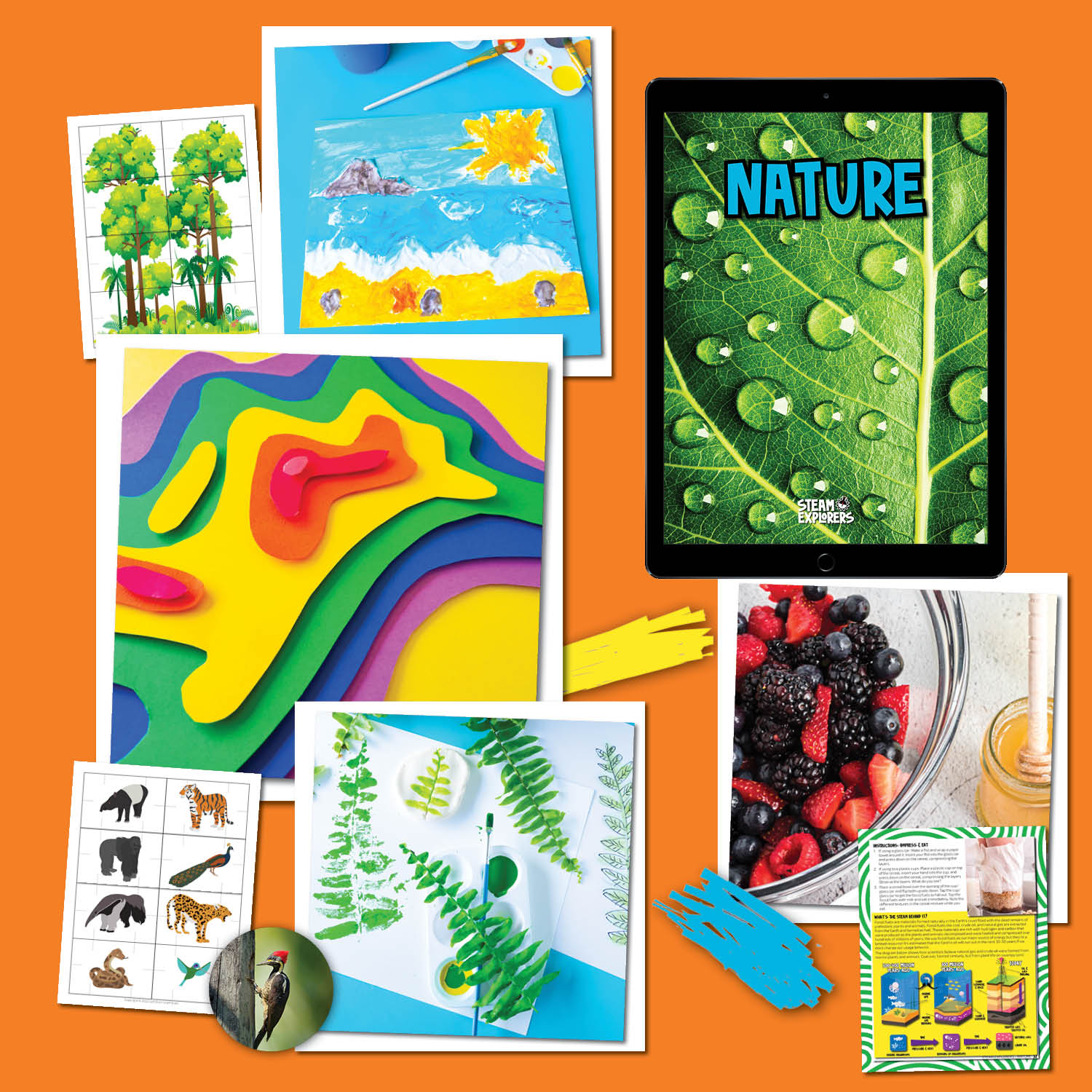
The kids will love designing dinosaurs, exploring the rainforest with a building challenge, making fern art, snacking on nature’s cereal, and so much more! You'll love the helpful standards-based learning, printables, and tools that make STEAM (science, technology, engineering, art, & math) exploration easy!
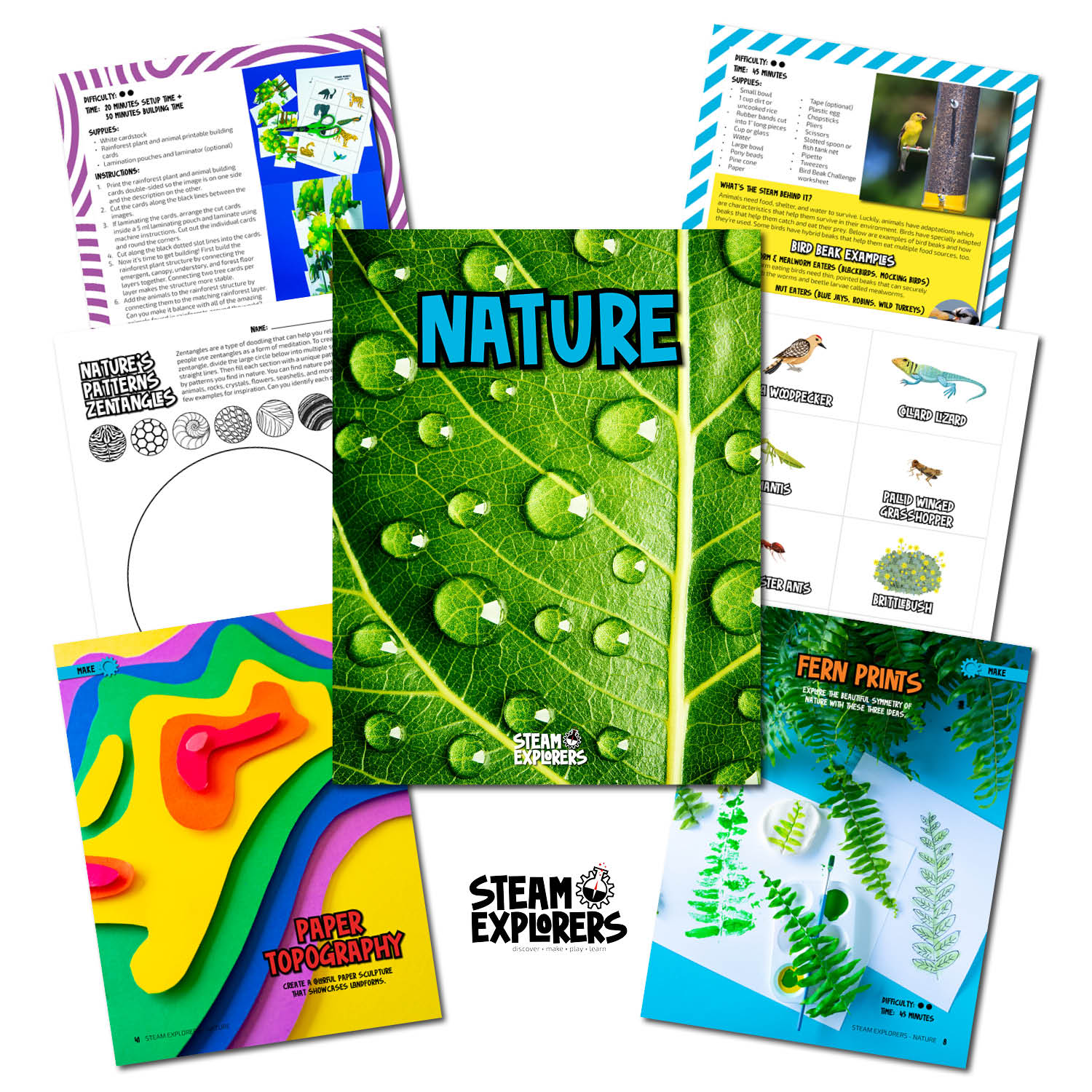



FREE! BIRD BEAK TOOL
CHALLENGE WORKSHEET
AND INSTRUCTIONS

